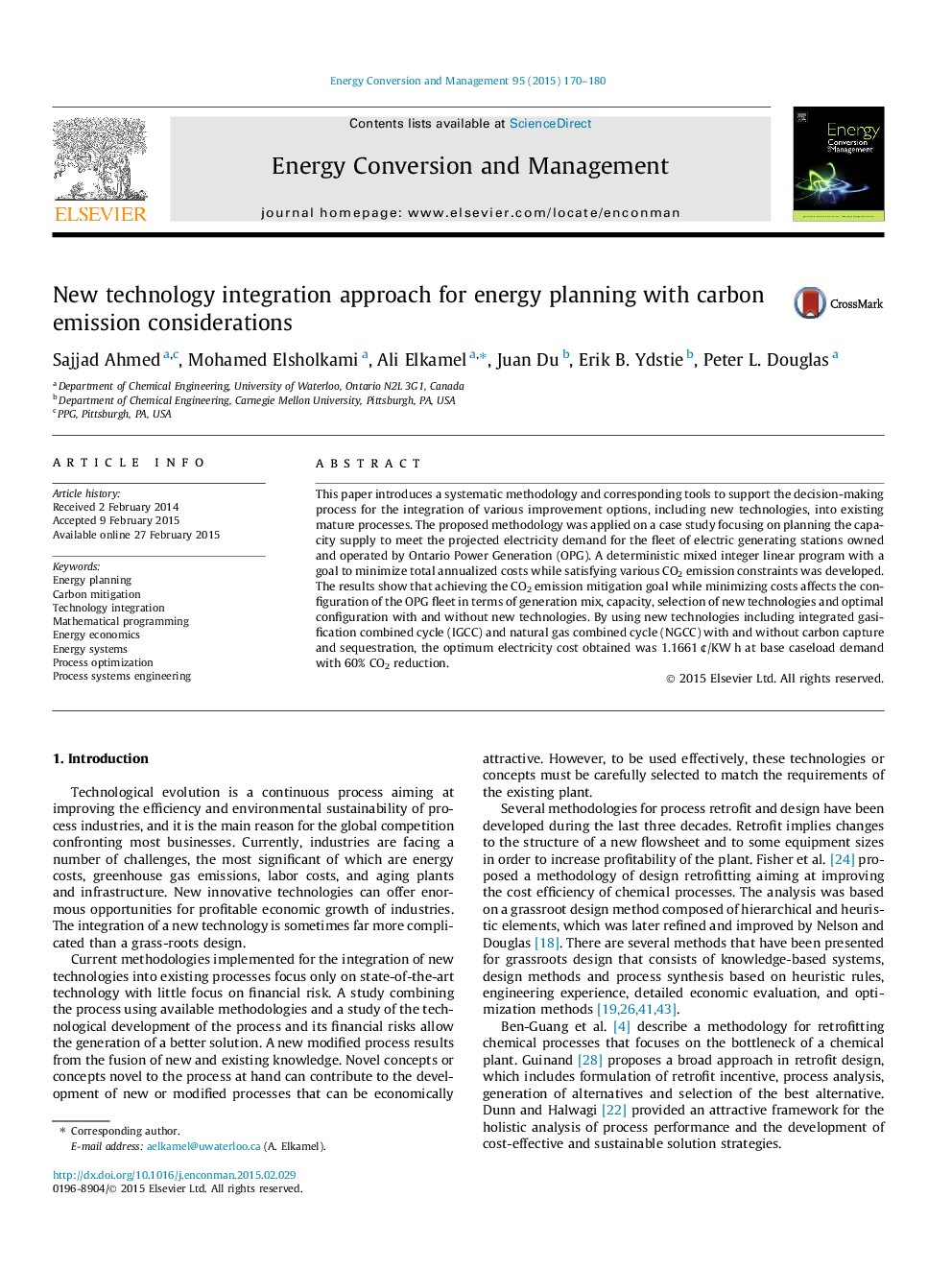| Article ID | Journal | Published Year | Pages | File Type |
|---|---|---|---|---|
| 765486 | Energy Conversion and Management | 2015 | 11 Pages |
•The integration of new technologies into existing mature energy production processes is considered.•The methodology is illustrated on a case study of a fleet of electric generating stations.•An optimization model that minimizes costs while satisfying CO2 constraints is proposed.•The results show different optimal fleet configurations for various cases.•Production networks consisting of a mix of generation units and new technologies are compared.
This paper introduces a systematic methodology and corresponding tools to support the decision-making process for the integration of various improvement options, including new technologies, into existing mature processes. The proposed methodology was applied on a case study focusing on planning the capacity supply to meet the projected electricity demand for the fleet of electric generating stations owned and operated by Ontario Power Generation (OPG). A deterministic mixed integer linear program with a goal to minimize total annualized costs while satisfying various CO2 emission constraints was developed. The results show that achieving the CO2 emission mitigation goal while minimizing costs affects the configuration of the OPG fleet in terms of generation mix, capacity, selection of new technologies and optimal configuration with and without new technologies. By using new technologies including integrated gasification combined cycle (IGCC) and natural gas combined cycle (NGCC) with and without carbon capture and sequestration, the optimum electricity cost obtained was 1.1661 ¢/KW h at base caseload demand with 60% CO2 reduction.
